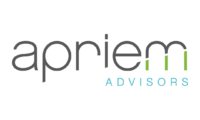With every new generation comes a new batch of opportunities – and burdens. Some, like my father “Pop,” who served his country during the Vietnam War and earned medals for the Sheriff’s Department of Los Angeles, are truly heroic. For his generation’s Millennial children, like me, we’re finding ourselves with a different set of challenges. Mostly financial and not nearly as dramatic, our responsibilities come with a unique pressure to provide for our families.
Now, with 401(k) plans being standard and pensions becoming increasingly rare, it’s up to Millennials to ensure they’re saving enough money – and that the money lasts them all the way through retirement.
If it sounds daunting, consider these five questions:
- How much money do you need to save?
- What rate of return do you need to achieve?
- How will you achieve that return?
- What retirement plan options do you have, and which one should you choose?
- Do you own your own business? If so, which retirement plan is right for you?
The list of questions and answers can go on and on. Don’t get overwhelmed – here are a few great steps that can help get you started, along with some resources that can make your savings more manageable:
- First, you must know that you cannot ignore your way to victory! Make the decision today to start moving towards your financial goals and be intentional about the steps that you take. Almost any plan is going to be better than no plan at all. As Benjamin Franklin said, “Failing to plan is planning to fail!”
- You need a budget. If you don’t control your money, your money will control you. It’s never been easier to create and follow a budget thanks to the myriad of tools and resources available to help you do so. To name a few:
- Mint – You can sign up online at mint.com and download the app which all sync up together. This software will allow you to connect all of your accounts, from checking/savings to credit cards and bills. It will then allow you to create your budget, automatically sync up with your spending and then make suggestions. Even better, it is free.
- YNAB.com – This is another budgeting software that is similar to Mint, however it forces you to get more involved with your spending and plan where each dollar will go before you even get paid. This service is a paid subscription; however, you can Try YNAB Free for 34 Days to see if you like it.
- If you have not taken control of your personal debt and it feels like it is getting out of control, now is the time to face it head on! For help in this area, I am a fan of Dave Ramsey’s Financial Peace University and as a graduate I can tell you just how well his Baby Steps program will help you to:
- Dump debt
- Build a monthly budget
- Save for the future
- Before you can really start to build wealth, you have to create a strong foundation. This includes your emergency funds of 3-6 months of expenses and insurance. Depending on your situation, you’ll want to look at all of your options for health, auto, home owners, life, disability, umbrella insurance, etc.
- Start saving and invest: Once you have your emergency fund fully funded it’s time to really get the ball rolling and start investing. The first and easiest place to get started is with your employer sponsored retirement plan, whether it be a 401(k), 403(b), 457, Simple IRA or any other type of plan offered by your employer you’re going to want to sign up ASAP! These plans offer a number of benefits that can vary depending upon the plan type and potential employer contribution, but at minimum you will have the ability to automate your savings and receive some great tax benefits such as tax deferred growth. Sta
rting now will get you on the path to saving for retirement which is going to be a long-term goal and will have plenty of time to benefit from compounding growth.Now that your retirement savings plan has been set up, you’ll also want to start to save and invest for your short-term goals such as a home purchase, funding a child’s college fund, etc. To set up a non-retirement / taxable account you can easily get started by opening up a self-directed brokerage account on a platform like Charles Schwab. Charles Schwab is well known for their user-friendly interface and low costs.. You can set up your account by going to www.schwab.com and clicking on the button labeled “Open an Account” once created you can set up an automated investing plan into some well diversified ETFs or Mutual Funds.I want you to remember that you are the most valuable investment that you will ever make, you will produce more income for yourself than any other investment over your lifetime. So, make yourself the most important bill every single month. Setting up an automatic savings program for both your retirement and financial goals can be the most effective way to stay on track.
- Get a financial advisor. Once you have saved $75,000-100,000 and are ready to start taking the next step into your financial future, it is a good time to start working with a financial advisor. While step #5 can do a great job getting you started, eventually you are going to need some more in-depth advice as you establish a financial plan and look at meeting specific goals like saving for education expenses, buying a home, investment property, starting a business, selling a business, creating an estate plan, creating a distribution plan for retirement and much more. Your financial needs will vary over the course of your life, so regularly working with a financial advisor can be a key component to your success. Tony Robbins book “Money Master the Game” creates a seven-step blueprint that anyone can use to achieve financial freedom. Throughout the book, Tony continuously repeats the benefits of working with a fiduciary. Here are the seven recommended questions to ask your advisor, along with the answers we would want to see:
- Registered Investment Advisor? (A: Yes)
- Fiduciary? (A: Yes)
- Proprietary Mutual Funds or Separate Accounts? (A: No)
- Third Party Compensation for Investment Recommendations? (A: No)
- Commission based? (A: No)
- Financial Planning Services? (A: Yes)
- Customized Investment Strategy? (A: Yes)
From 2009 to 2018, I worked as the director of annuity marketing for a brokerage general agency. Essentially, I was a wholesaler who had the opportunity to work with financial professionals across the United States and help them to develop retirement planning strategies for their clients seeking guaranteed lifetime income.
After almost a decade of working side-by-side with advisors across the country, I had the opportunity to observe the difference, both good and bad, that a financial advisor makes in a person’s life. In an effort to be more like my Pop, I want to be a hero in the eyes of my clients, and that is why I asked Harmon Kong and Rhonda Ducote for the opportunity to work for Apriem Advisors. They have created an organization and culture that is always looking to what is in the best interest of their clients because they see them as family!
Disclosures: Third party websites are for informational purposes only, are independently owned and operated and are not affiliated with employed or supervised by Apriem Advisors. You should not construe inclusion of any third-party website as a recommendation, endorsement, or sponsorship by Apriem of such website or its affiliates. You should investigate these third-party websites and their services before deciding to use them.


 rting now will get you on the path to saving for retirement which is going to be a long-term goal and will have plenty of time to benefit from compounding growth.Now that your retirement savings plan has been set up, you’ll also want to start to save and invest for your short-term goals such as a home purchase, funding a child’s college fund, etc. To set up a non-retirement / taxable account you can easily get started by opening up a self-directed brokerage account on a platform like
rting now will get you on the path to saving for retirement which is going to be a long-term goal and will have plenty of time to benefit from compounding growth.Now that your retirement savings plan has been set up, you’ll also want to start to save and invest for your short-term goals such as a home purchase, funding a child’s college fund, etc. To set up a non-retirement / taxable account you can easily get started by opening up a self-directed brokerage account on a platform like